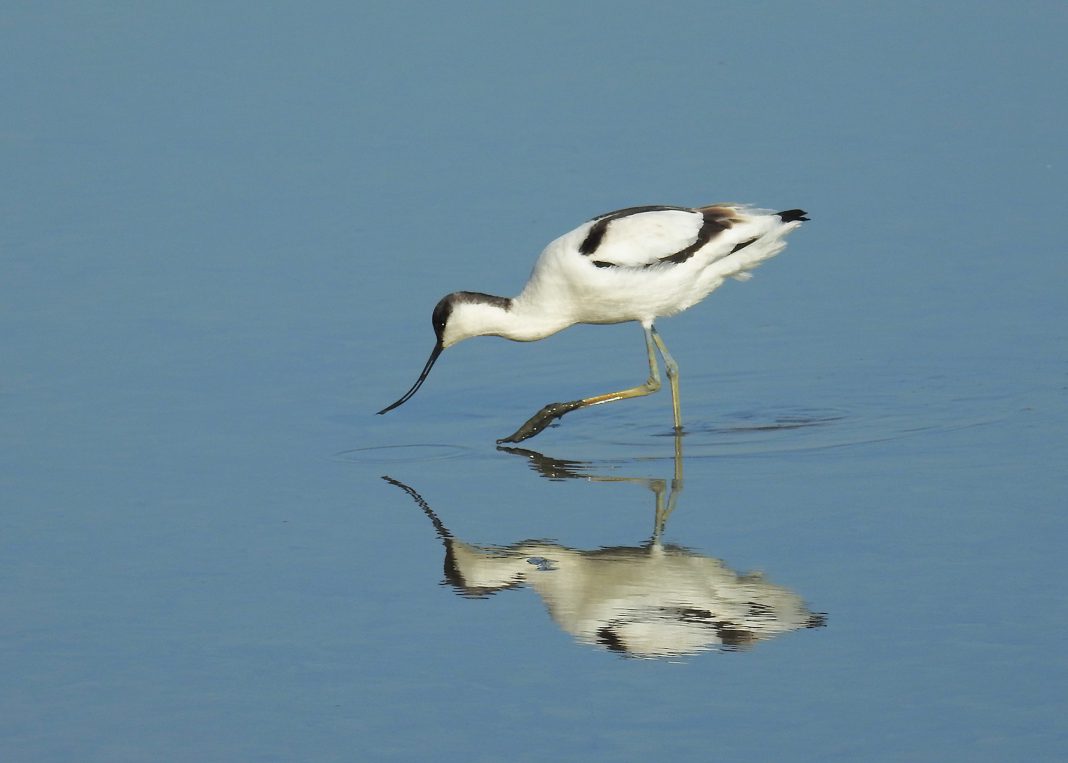While this year has not been a great one for our breeding birds, there were still some bright spots to be found at Rye Harbour Nature Reserve. At Castle Water, at least three pairs of Little Egret fledged around six young, at least one small brood of Shoveler was also seen during the month, and a fledged Marsh Harrier was seen hunting over the reed-beds.
And on the beach, broods of Oystercatcher, Ringed Plover and at least one half-grown Avocet chick were recorded, while small numbers of fledged Black-headed Gull and Wheatear were also present.
Migrant wader numbers picked up during the month and July saw regular sightings of Curlew, with at least 70 at Castle Water on July 9, and Whimbrel, while around 230 Lapwing were at Castle Water on July 27, up to 35 Dunlin on Flat Beach mid-month and smaller numbers of Knot, Common Sandpiper (above), Green Sandpiper, Black-tailed Godwit and Greenshank.
Probably the best of the bunch was a Little Stint on Harbour Farm on July 16 and two male Ruff which were present at Castle Water between at least July 15-17. Notable waterfowl during July included several sightings of Garganey (with two on July 27), regular Great White Egret (three on July 20) and a Cattle Egret on the July 12.
Migrants passing through
Passerines during July included good numbers of hirundines moving through, with counts of 100+ House Martin and Swallow and 50+ Sand Martin early in the month. There were good numbers of Swift too, with a maximum count of 100+ over Harbour Farm on July 29.
Other migrants included Yellow Wagtail on the Beach Reserve on July 28, Grey Wagtail at Castle Water on the July 12 and a Whinchat on July 13, while a Crossbill was present over Harbour Farm Barns on August 2. The highlight, however, was definitely two Red-rumped swallow over the Beach Reserve on the July 22.
Moth trap highlights during July included several Sussex Emerald, Pigmy Footman, Jersey Tiger, Bordered Ermel and Starry Pearl, while Great Silver water beetle were trapped on several dates, with two on July 16.
Despite the generally good weather during the month, butterfly numbers remained low, with the bulk of records grass-feeding species such as Meadow Brown and Gatekeeper. However, there were still a few sightings of Marbled White early in the month and several Clouded Yellow late in the month.
Rare invertebrates sighted
Other rare invertebrates included the flesh-fly Miltogramma germari on several dates at Castle Water, Saltmarsh Horsefly on Harbour Farm on July 6 and Castle Water on July 21 and regular sightings of Bee Wolf at Castle Water. In addition, a record of Rose Chafer near the viewpoint on July 28 was the first reserve’s first.
Plants in flower included Marsh Helleborine, Stinking Hawksbeard, Least Lettuce, Sea Pea, Lesser Water Plantain, Fleabane, Red Hemp-nettle and masses of Wild Carrot.
Rye Harbour Nature Reserve is managed by Sussex Wildlife Trust. There are currently access restrictions due to building works, please check before visiting.
Image Credits: Hugh Clark FRPS Sussex Wildlife Trust .



